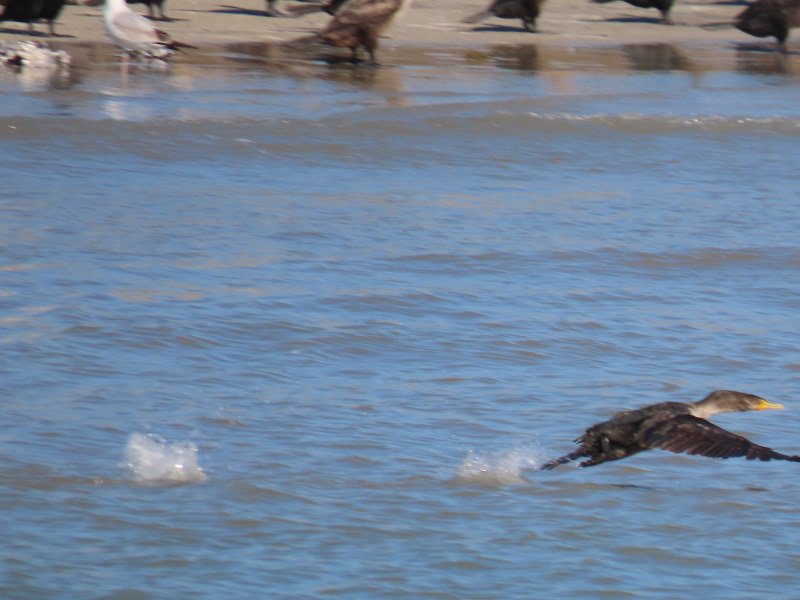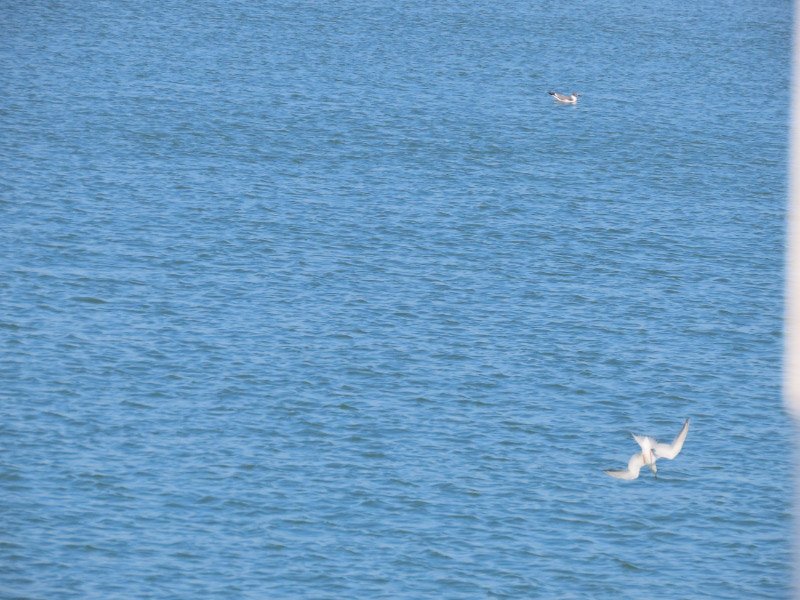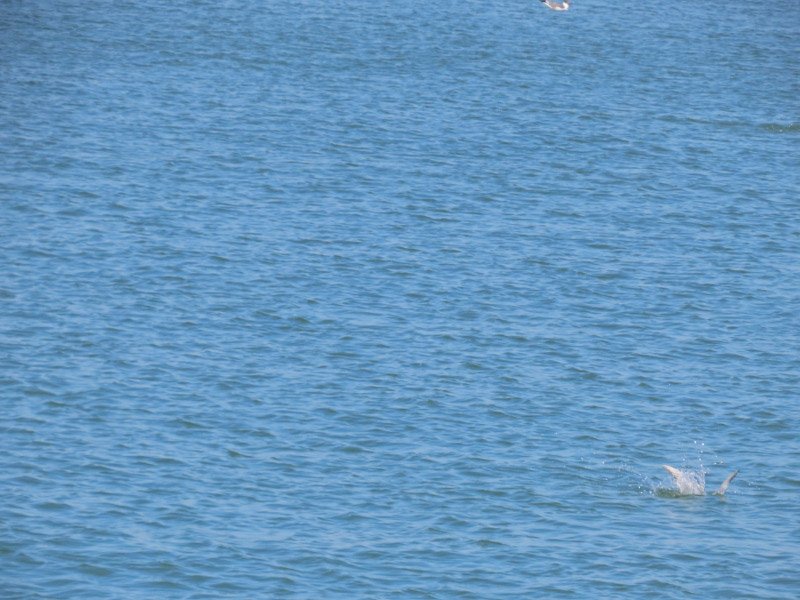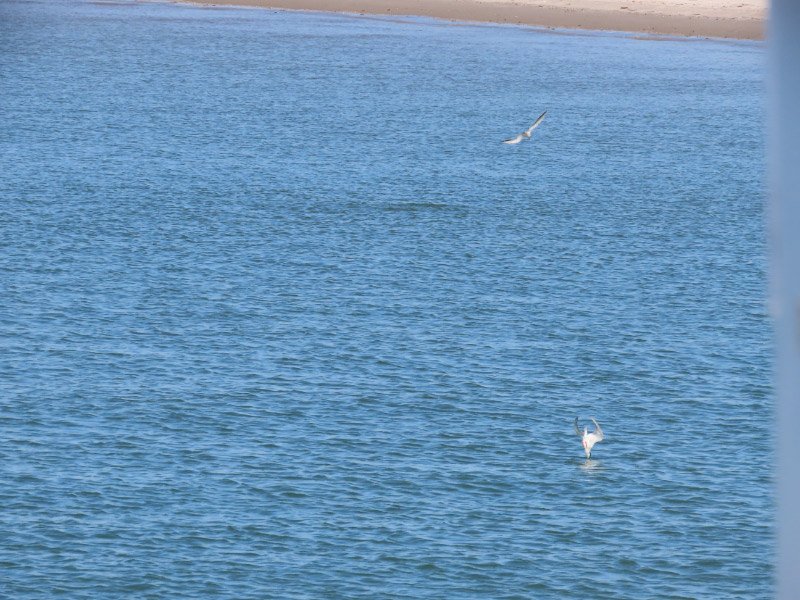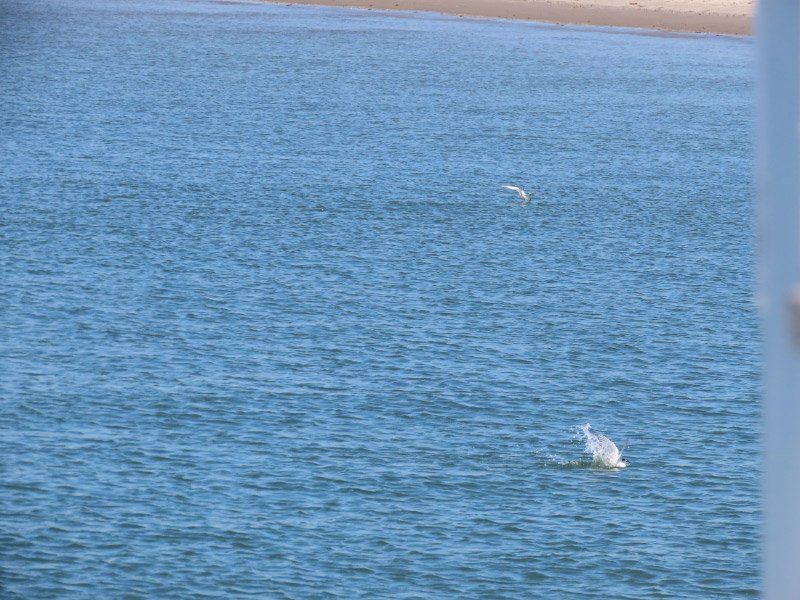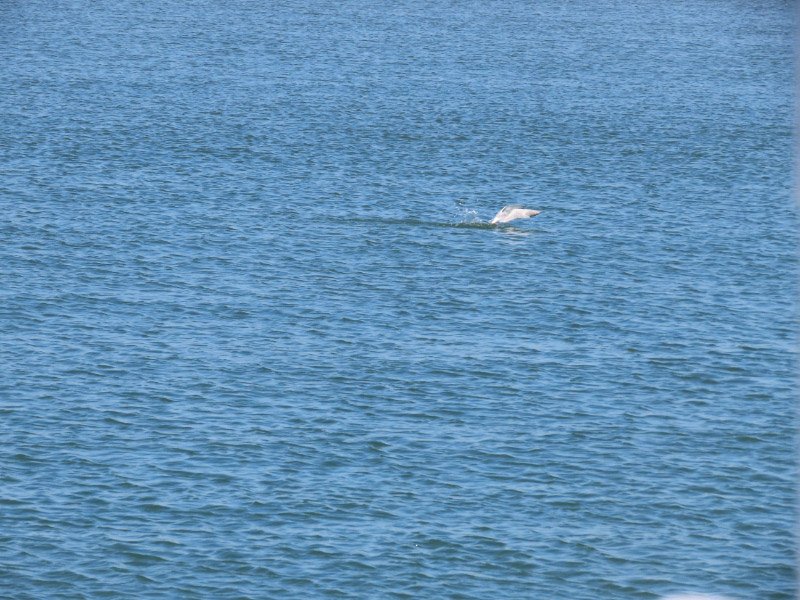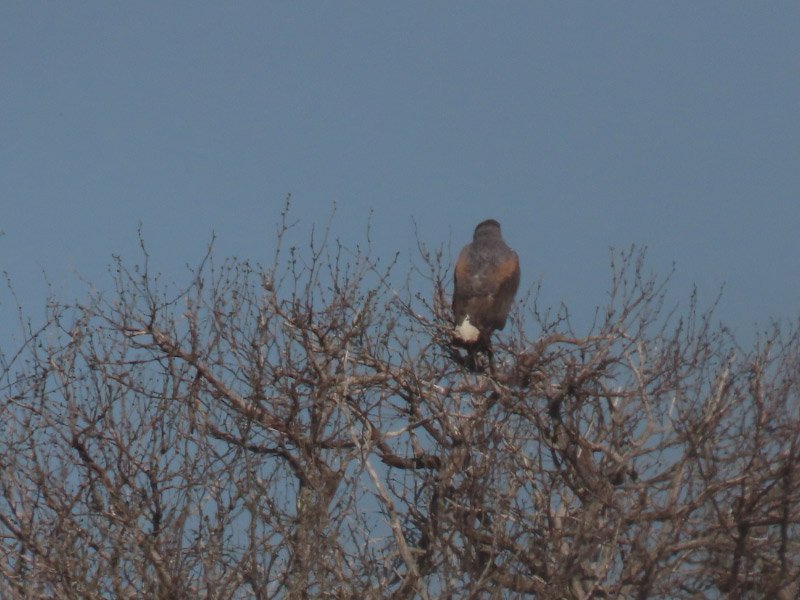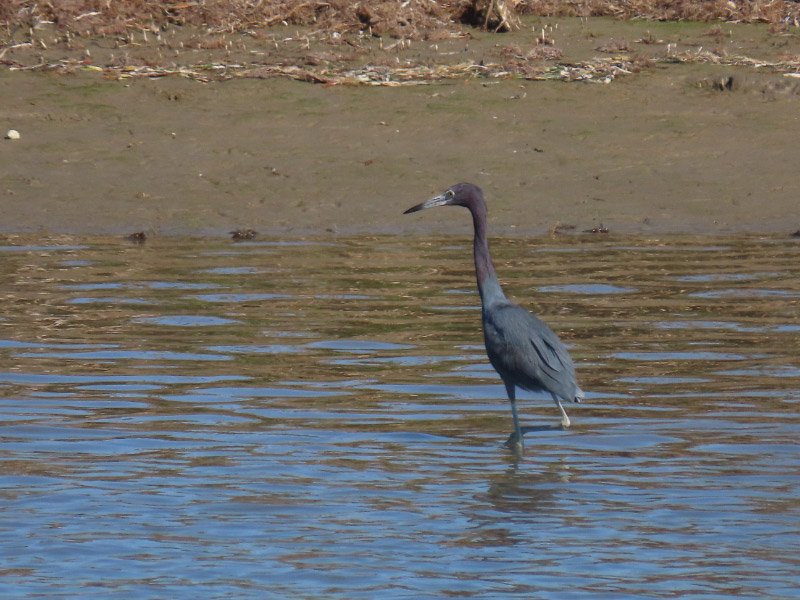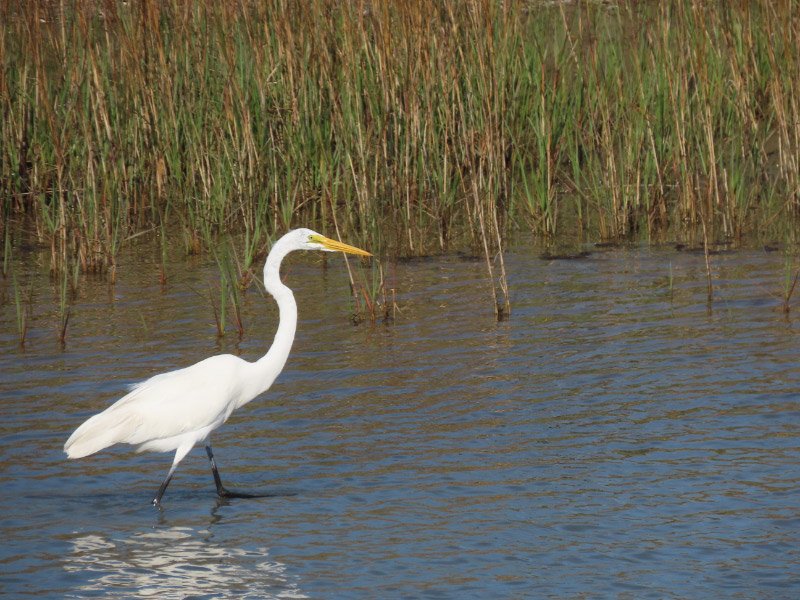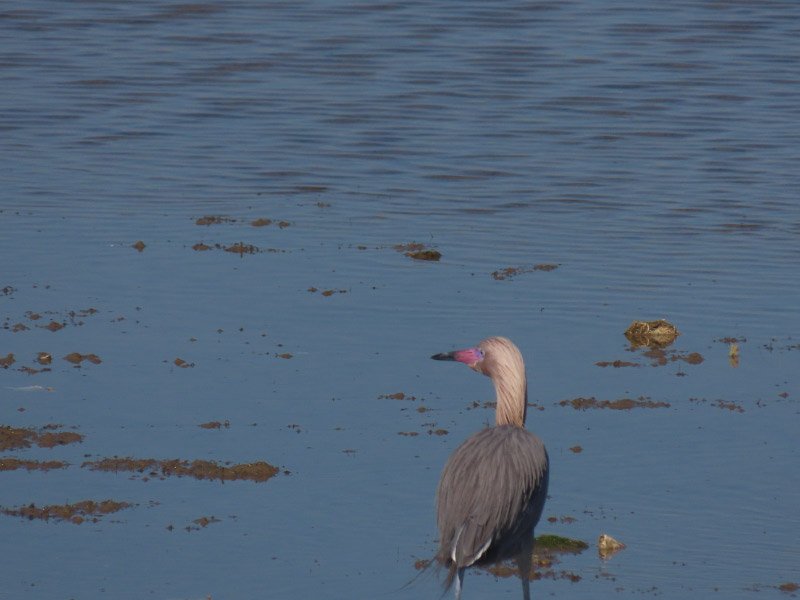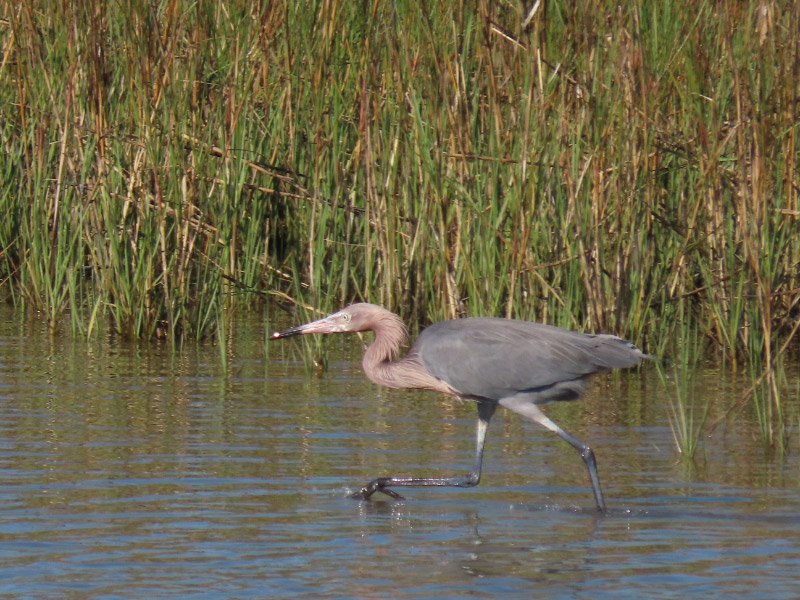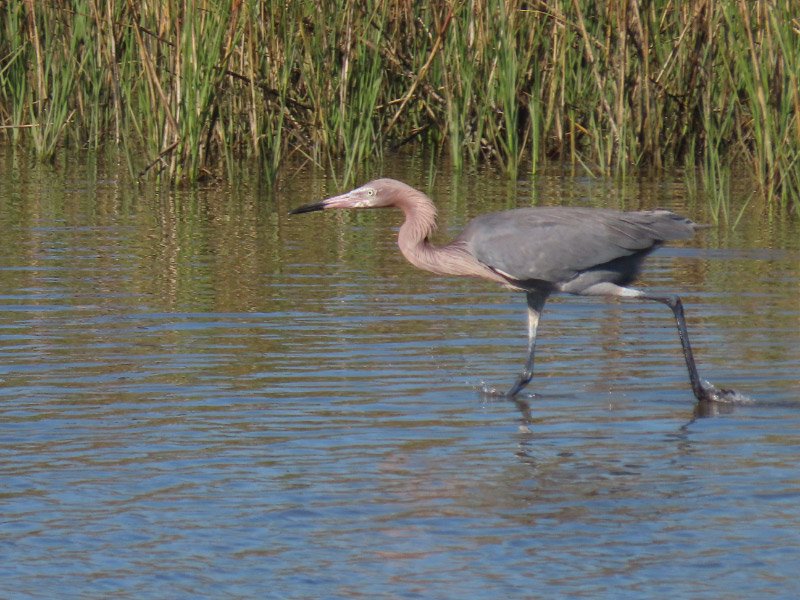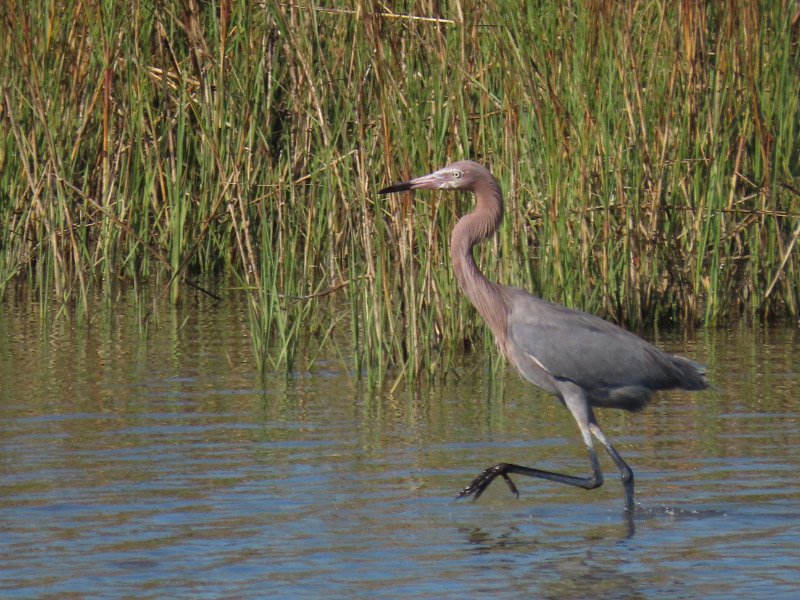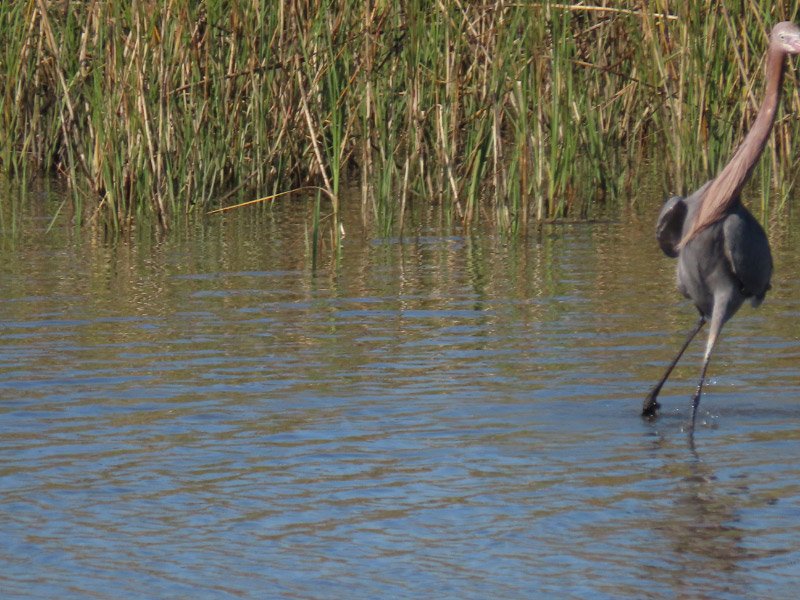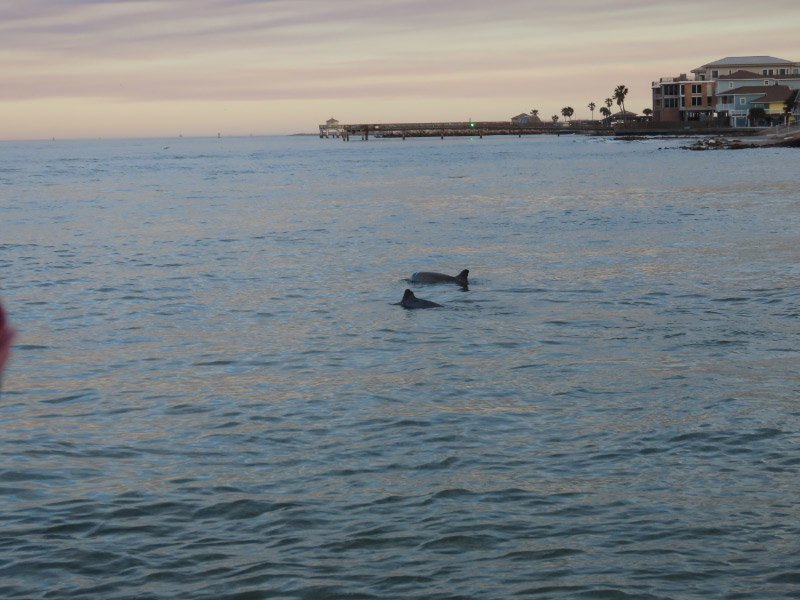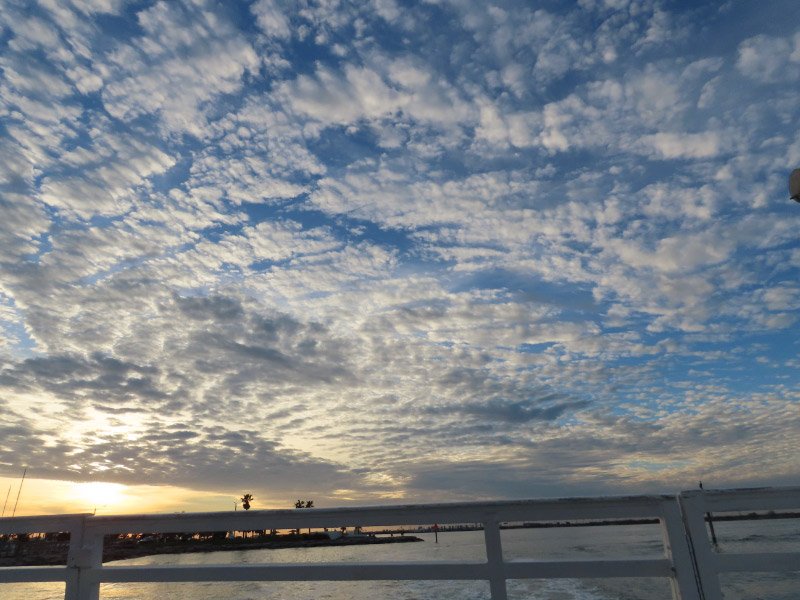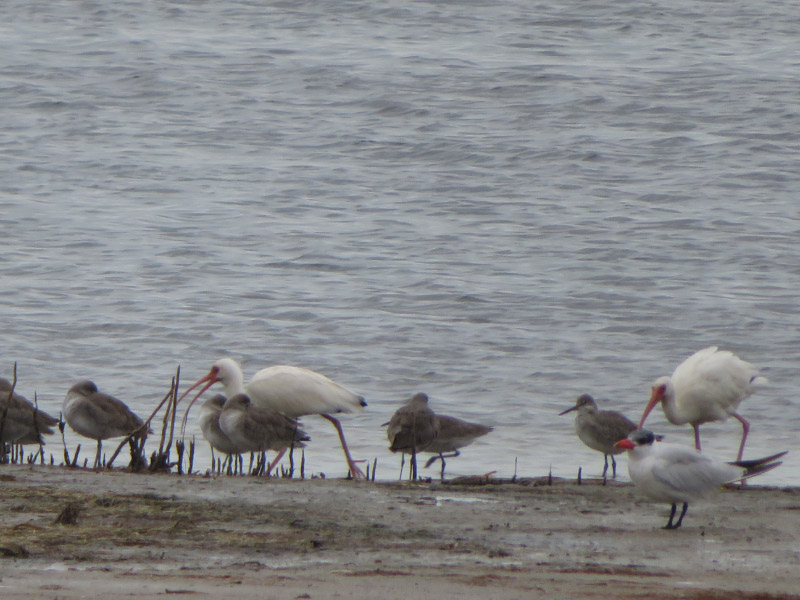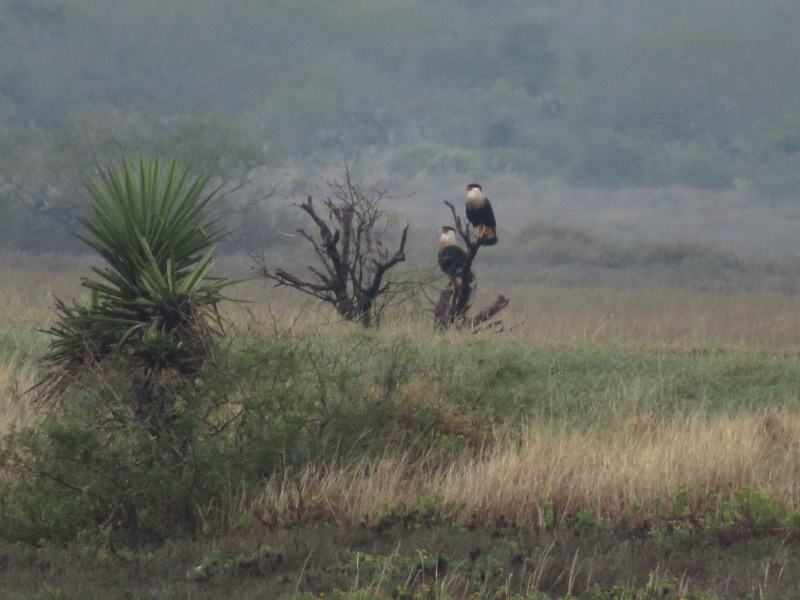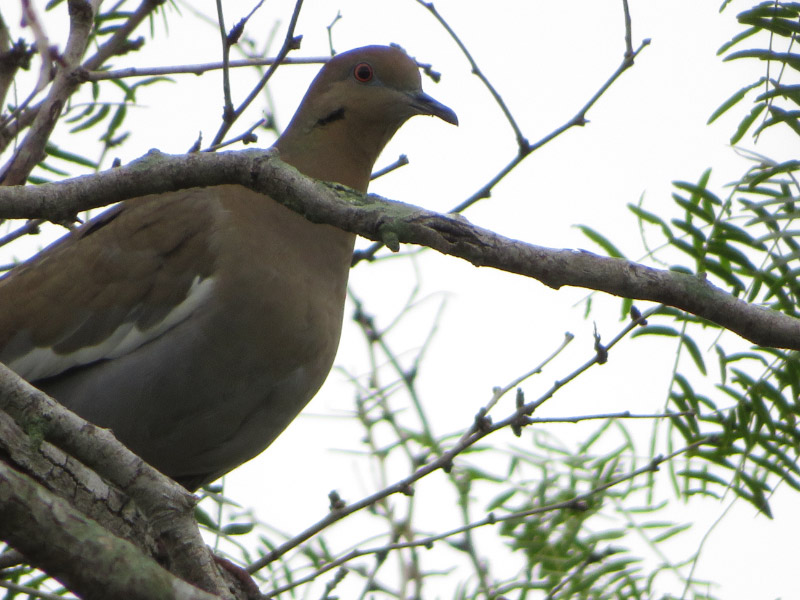Bird Photography Boat Tour
/Our second day of the Whooping Crane Festival continued with another boat tour after returning from the King Ranch and a quick lunch. The afternoon emphasis was on bird photography. The difference was subtle. The guide did suggest some settings to accommodate photographing in the very bright environment of a sunny day. I opted to take the normal opportunities to photograph birds as usual…but then took some photographic challenges too.
I started before we even boarded the boat. Grackles were taking snack packaging out of a trash can. The female seemed to be unimpressed with her partner’s antics.
I attempted to get a double-crested cormorant taking off from the water…managed to capture the form and splashes of water but the eye doesn’t show….plenty of room for improvement.
There were terns (probably common terns) diving toward the water for fish. I tried pointing my camera in that direction and pressing the button to take multiple pictures in fast succession. It was hard to hold the camera still as the boat moved! The shape of the bird as it nears the surface of the water was something I couldn’t study until I looked at my pictures on a bigger screen. This was my first attempt at photographing feeding terns!
The back of a white-tailed hawk – the only sighting of this species of the trip. It isn’t a great picture in the traditional sense….but it does tell a story. The bird was sitting in dead mangroves; the mangroves died during very cold weather a few years ago and recovery is slow; hurricane damage to the Aransas area would be even worse than before if one comes through before the mangroves can become established again.
The birds always seemed to be a little further away than optimal…and the boat was rocking. But I took pictures anyway: white ibis, little blue heron, osprey, great egret, and great blue heron. I tend to take photographs rather than make notes about what I am seeing…it’s easier with the camera already in hand!
And then there were the reddish egrets… with their pink and black bill.
And finally one started foraging…moving rapidly in the shallows. It seemed to veer off suddenly…something there that the bird didn’t expect?
I took group pictures of birds on small islands in the water…always interesting to see how many I can identify on my big screen later. In the one below, I see brown pelicans (adult and juvenile), American white pelicans, cormorants (double crested probably)…all in the foreground.
As I zoomed in on birds that were not in a group I noticed a black skimmer and some Caspian terns.
It’s always a thrill to see a bird I would not have seen without being on a birding field trip like this red-breast merganser. It was a single bird…swimming rapidly away from the boat…and I probably would not have noticed it without someone pointing it out. I’m not sure it was the guide or another participant that noticed it.
The same was true for another black-crowned night heron. I photographed one on the King Ranch in the morning! I was pleased that I was able to find and focus on the bird more easily than many of the others on the boat.
The light began to change as we neared the end of the day. There were enough clouds to try a non-bird landscape shot of the water the sky…a bit of land at the horizon.
I changed a setting on my camera to try an artsy image of a cormorant and the shore as we came back toward the dock.
And then the boat stopped just before we got to the dock….for dolphins. I couldn’t top my husband’s dolphin picture in the bow wave of the big ship, but it was fun trying to anticipate when they would surface!
And then one last picture before we got off the boat! It was a great second day at the Whooping Crane Festival. The next morning was an early one….getting on a boat at 6 AM to see Whooping Cranes in the Aransas National Wild Life Refuge. We headed to the hotel for an early evening to be ready for it.



